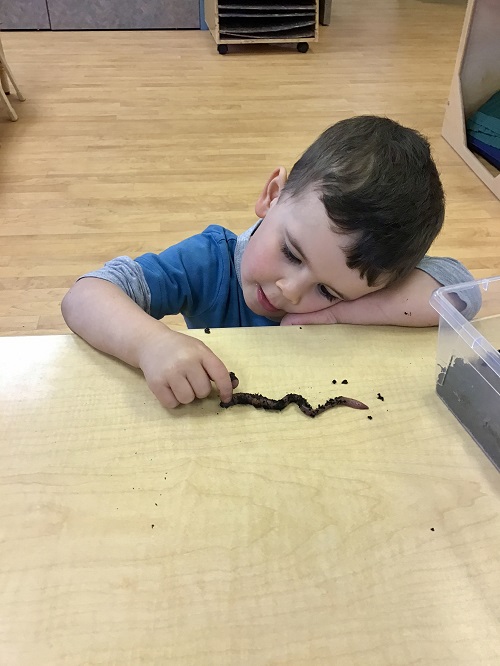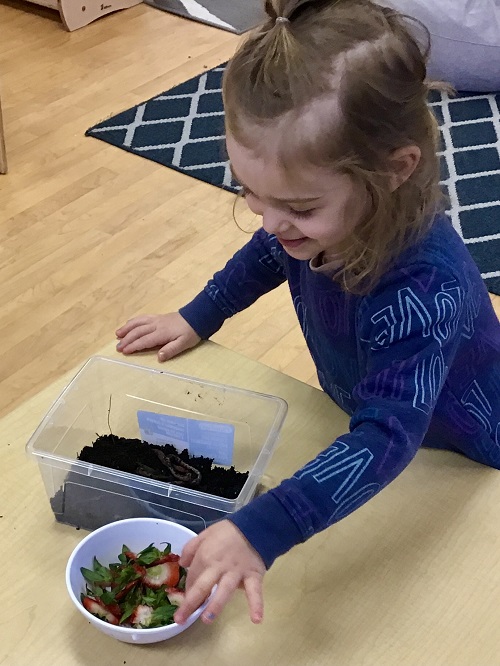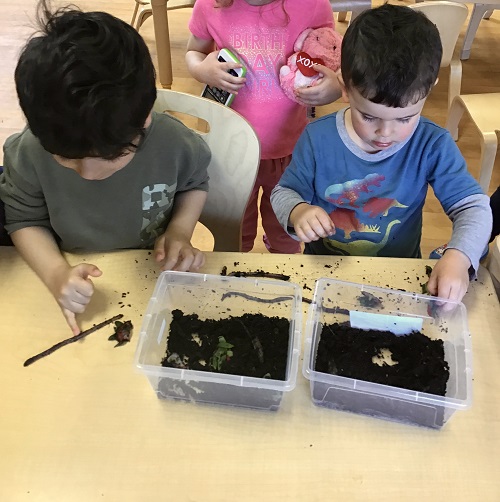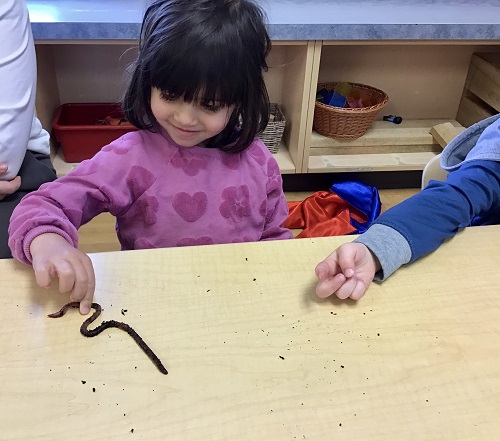One rainy day, the educators in the preschool room thought it would be fun to bring some outside fun inside to surprise the children with.
Bailey set up two bins full of soft, squishy soil. Inside the dirt were… wiggly worms. As the children entered the room they looked around the room to see what was out for provocations to explore with. As a few of the children got closer they shared—
“Look,” said Brady. “A worm!”
“It’s moving,” giggled Brooke.
The children sat around the dirt bins. They used small scoops, cups, and their hands to explore.
“Dig, dig, dig!” sang Elyas.
Worms peeked out of the soil. The children observed that some were long and some were short. All were very, very wiggly.
Educator Bailey asked, “What do the worms feel like?”
“Slippery,” said Ben
“Tickly,” said Layan, as she laughed.
The children watched the worms crawl. They moved slowly and left little trails in the dirt.
“Where are they going?” asked Elyas
“They’re looking for food,” said Bailey. “Worms like to eat old leaves, tiny pieces of plants and organic matter.”
“Yum-yum for worms!” said Brady “Can we get them more food?” He inquired
Sure! Bailey continued, “Where could we find some more food for them?” Bailey asked curiously.
“Could we ask Karen for some food?” Elyas wondered.
“Great idea,” Bailey continued. We went to the kitchen and saw Karen cutting up some strawberries. “What’s for lunch Brady asked? Karen shared what we were having and Brady asked if we could get some strawberries to feed our worms.
Karen gave some strawberry scraps and off we went to feed the worms. The children continued to explore and take care of the worms all day. When it was time for afternoon outdoor play, they took the worms and placed them in the dirt. “There, now they are back home,” Ben expressed with a smile.
“Night-night, worm,” whispered Brady.
The next day the preschoolers asked to go and find the worms again, but we did not find any. The children searched all around the playground and couldn’t find them anywhere. Ben and Brady shared that maybe we should wait for another rainy day for them to come back out to play. “What a great idea,” Bailey shared.
To extend the children’s learning opportunities, we will continue to explore more outside using our sensory exploration from natural materials around the playground, allowing them to mix the leaves, sticks, pebbles and other loose parts found around our playground and community. Experiences as these allow more meaningful explorations and introduction to textures. They also will introduce new expressive vocabulary like “rough,” “smooth,” and “crunchy.”
Next time we find some more worms it would be fun to also fill a mason jar full of dirt and observe the worms create tunnels within the dirt.
